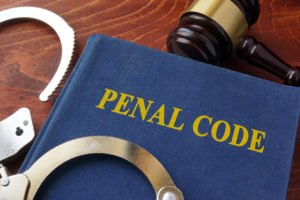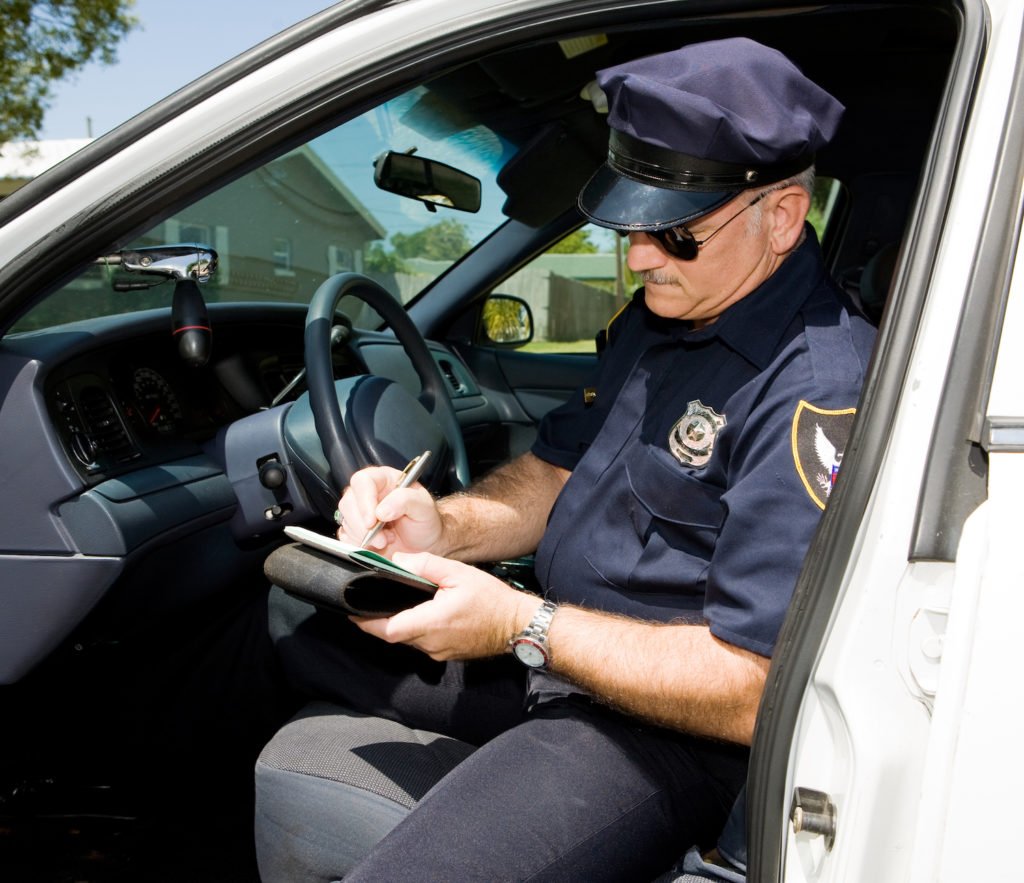
In booking documents and citations, VC is an abbreviation for California Vehicle Code, PC is an abbreviation for California Penal Code, and HS is an abbreviation for California Health and Safety Code. These abbreviations and different codes are used to help police identify which California law a person is suspected of violating.
For example, if a person is suspected of reckless driving, then booking documents will reference VC 23103. Vehicle Code Section 23103 is the California statute on reckless driving
Further, if a person is suspected of trespassing, then booking documents will reference PC 602. Penal Code Section 602 is the California statute on trespassing.
Note that “booking” refers to the procedure where law enforcement officers record the details about a person’s arrest. These details include the charges a person is suspected of.
Booking is a different process than an “arraignment.”
An arraignment is usually the first formal court hearing in a criminal case where the accused enters a plea of:
- guilty,
- not guilty, or
- no contest (or nolo contendere).
What does “VC” stand for in California booking documents?
VC and CVC are abbreviations for “Vehicle Code.” California’s Vehicle Code is a collection of all state statutes relating to the
- use,
- registration, and
- ownership of motor vehicles.
Vehicle Code is also sometimes referred to as
- “CVC,” or
- “California Vehicle Code.”
A few common laws found within the CVC include:
- Vehicle Code 22350 VC, California’s basic speeding law,
- Vehicle Code 23152b VC, driving with a BAC of .08 or greater, and
- Vehicle Code 4462 VC, vehicle registration fraud.
If a booking document lists a law within the Vehicle Code, then that is the law that the driver is suspected of violating.
What does “PC” stand for in a booking document?
PC and CPC are abbreviations for “Penal Code.” California’s Penal Code is a collection of statutes that set forth the state’s laws on most criminal offenses. Penal Code is also sometimes referred to as “CPC,” or California Penal Code.
A few common laws found within this California code include:
- Penal Code 459 PC, burglary,
- Penal Code 261 PC, rape, and
- Penal Code 30605 PC, possession of an assault weapon.
If a booking document lists a law within California’s Penal Code, then that is the law that the person named in the document is suspected of breaking.
What does “HS” refer to in state booking documents?
HS and HSC are abbreviations for “Health and Safety Code.” California’s Health and Safety Code largely includes state laws on drug-related offenses. Health and Safety Code is sometimes referred to as
“HSC,” or Health and Safety Code, and
“CHSC” or California Health and Safety Code.
A few common laws found within the CHSC include:
- Health and Safety Code11357 HS, possession of marijuana,
- Health and Safety Code11352 HS, sale of a controlled substance, and
- Health and Safety Code11351 HS, possession for the sale of a controlled substance.
If a booking document lists a law within the HSC, then that is the law that the person named in the document is suspected of breaking.

VC is short for Vehicle Code.
What does “booking” mean?
“Booking” refers to the process or procedure where police officers cite or arrest someone and write a report that includes all the pertinent facts of the situation.1 The report includes:
- a summary of the events that led to the arrest,
- a reference to the law(s) that the person named in the report is suspected of breaking,
- personal details regarding the suspect, and
- the names of any witnesses.2
Once the report is finalized, it is given to the district attorney or prosecutor and he/she decides:
- whether to file charges against the suspect, and
- if so, what specific charges to file.3
In terms of criminal offenses, the prosecutor may also have to decide whether to charge a crime as either a:
- misdemeanor, or
- felony.4
Due to a defendant’s right to a speedy trial, prosecutors typically have to decide on filing charges within 48 hours of a person’s arrest.5
Is “booking” the same thing as an arraignment?
Booking and arraignment are different procedures under California law.
An arraignment is normally the first formal court proceeding in a criminal case. It takes the form of the defendant appearing before the judge presiding over the case.
During the arraignment hearing:
- the judge will advise the defendant of his/her Constitutional rights,
- the accused learns of the specific charges that have been filed against him/her,
- the accused has the opportunity to enter a plea (guilty, not guilty, or no contest), and
- the court will set, modify, reinstate, or exonerate the defendant’s bail.
The arraignment hearing takes place once the prosecuting agency (typically the local District Attorney’s office or the local City Attorney’s office) has filed formal charges. When the arraignment takes place is strictly regulated according to California law.
Defendants are protected during arraignments under both the U.S Constitution and the California Constitution.
A defendant’s constitutional rights include:
- the right to be represented by an attorney (which includes the right to be represented by a court-appointed public defender if he/she is not able to afford a private criminal defense attorney),6
- the right against self-incrimination,
- the right to a speedy trial (enforceable through something called a Serna or speedy trial motion),7
- the right to a trial by jury, and
- the right to produce and confront witnesses.8
If the defendant is accused of committing an infraction, then only some of these rights apply. For example, a defendant charged with an infraction is not entitled to a court-appointed attorney or a trial by jury.9
Legal References:
- Black’s Law Dictionary, 2nd ed.
- See California Courts website, “How Criminal Cases Work.”
- See same.
- See same.
- See same.
- California Penal Code 858 PC.
- California Penal Code 1382 PC.
- California Penal Code 686 PC.
- California Penal Code 19.6 PC.

